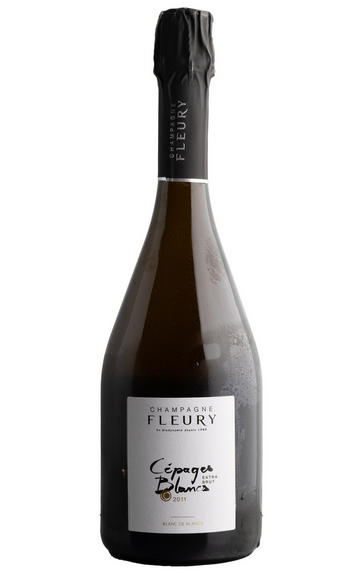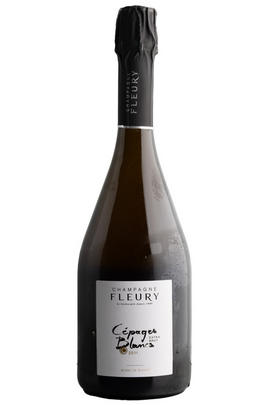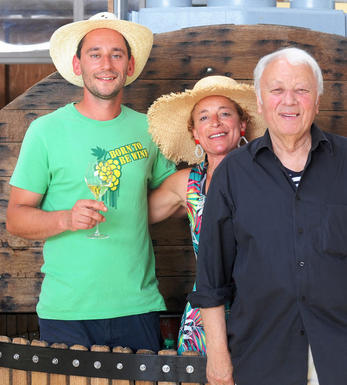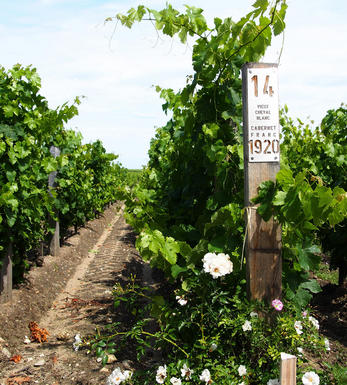
2011 Champagne Fleury, Cepages Blancs, Extra Brut

About this WINE

Champagne Fleury
Champagne Fleury has been in the business of winemaking for over 125 years and is respected as one of the region’s first pioneers of biodynamics. Despite its long history, Fleury has remained a family winery. It is located in the far south of Champagne, in the Côtes des Bar, where the terroir has a huge amount in common with the Grand Crus of Chablis.
Fleury has never stopped innovating. In 1989, they committed fully to organic and biodynamic practices, the first in the region to do so. The winery prides itself on personifying the “art of being natural”. In this spirit, Champagne Fleury isn’t afraid to go against the grain in the interest of coaxing the very best out of the terroir.
Perhaps due to this, Fleury cuvées have a distinctive vinous quality and display outstanding precision, thanks to the care taken by the team in growing them. The mature Champagnes are a conversation piece at any gathering, managing to balance an ethereal purity of fruit with an earthy sense of place.

Blanc de Blancs
In Champagne, the term Blanc de Blancs designates Champagnes made only from Chardonnay grapes. The vineyards located between Cramant and Mesnil-sur-Oger in Cote de Blancs yield the best examples of the style.
A classic Blanc de Blancs is restrained and elegant when young, yet with ageing it develops a mouth-coating brioche richness that overlays an intense expression of fruitiness. Blanc de Blancs are endowed with longer ageing potential than a typical Blanc de Noirs.
Recommended Producers: Salon, Billecart Salmon, Jacques Selosse, Dom Ruinart, Krug, Le Mesnil Grand Cru, Guy Larmandier

Chardonnay
Chardonnay is often seen as the king of white wine grapes and one of the most widely planted in the world It is suited to a wide variety of soils, though it excels in soils with a high limestone content as found in Champagne, Chablis, and the Côte D`Or.
Burgundy is Chardonnay's spiritual home and the best White Burgundies are dry, rich, honeyed wines with marvellous poise, elegance and balance. They are unquestionably the finest dry white wines in the world. Chardonnay plays a crucial role in the Champagne blend, providing structure and finesse, and is the sole grape in Blanc de Blancs.
It is quantitatively important in California and Australia, is widely planted in Chile and South Africa, and is the second most widely planted grape in New Zealand. In warm climates Chardonnay has a tendency to develop very high sugar levels during the final stages of ripening and this can occur at the expense of acidity. Late picking is a common problem and can result in blowsy and flabby wines that lack structure and definition.
Recently in the New World, we have seen a move towards more elegant, better- balanced and less oak-driven Chardonnays, and this is to be welcomed.


Buying options
Add to wishlist
Description
The Cépages Blancs cuvée from Maison Fleury is now a 100% Chardonnay. Grapes are grown on Chablis-esque Kimmerigian clay soils, resulting in a wine that is noticeably Burgundian in character. 40% of the blend was vinified in oak, which has added a hint of almond to a palate rich in white flower and dried fruit flavours. Although this is an Extra Brut wine, there is a delightfully honeyed note on the finish. This is a wine to be enjoyed alongside chicken dishes, over the next 10 years or so.
Davy Żyw, Senior Buyer, Berry Bros. & Rudd
wine at a glance
Delivery and quality guarantee